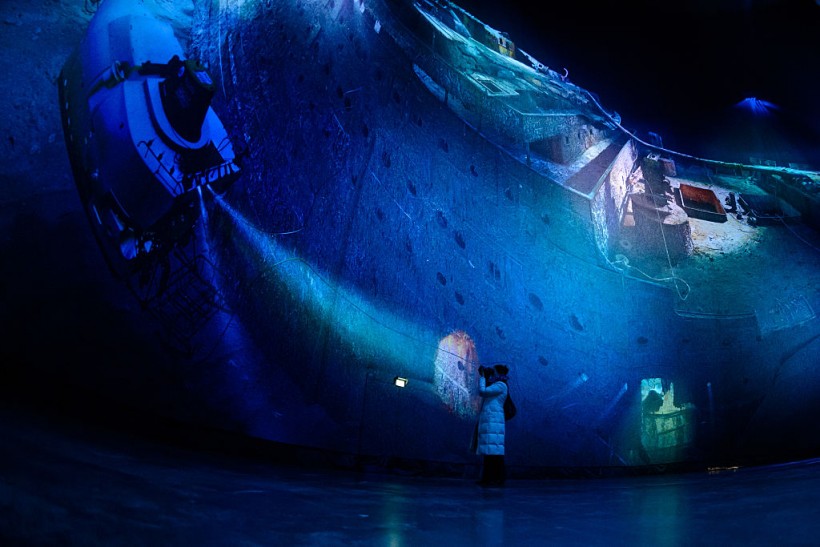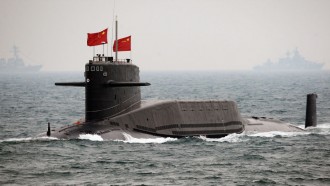In a race against time, rescuers are scouring the remote area of the Atlantic Ocean for a missing submersible that was on a mission to document the wreckage of the Titanic.
The submersible, named the Titan, was carrying five individuals, including a pilot, a renowned British adventurer, two members of a well-known Pakistani business family, and another passenger, reported first by AP.
The vessel was reported overdue by authorities on Sunday night, approximately 435 miles (700 kilometers) south of St. John's, Newfoundland, as confirmed by Canada's Joint Rescue Coordination Center.

LEIPZIG, GERMANY - JANUARY 27: A woman takes a picture of a large-scale 360-degree panorama presentation of the Titanic shipwreck by artist Yadegar Asisi during a press preview on January 27, 2017, in Leipzig, Germany.
Race Against Time
The urgency of the situation lies in the limited oxygen supply on board the Titan. The submersible embarked on its journey at around 6 a.m. on Sunday with a 96-hour oxygen reserve, according to David Concannon, an advisor to OceanGate, the company behind the mission.
Rescue efforts are facing challenges due to the remote location of the area. Rear Adm. John Mauger, a commander for the US Coast Guard, acknowledged the difficulties, stating, "It is a remote area—and it is a challenge to conduct a search in that remote area. But we are deploying all available assets to make sure we can locate the craft and rescue the people on board."
Shortly after the submersible went on its way, the Canadian research icebreaker Polar Prince, which was providing assistance to the Titan, lost communication with the vessel.
Despite this setback, the Polar Prince and other search assets persisted in conducting surface searches throughout the night.
Additionally, a Canadian Boeing P-8 Poseidon reconnaissance aircraft and two US Lockheed C-130 Hercules aircraft have been engaged in aerial surveillance and will continue their search efforts.
Utilizing satellite data from MarineTraffic.com, the location of the Polar Prince was identified, along with the presence of the nearby Bahamas-flagged cable layer Deep Energy, which is likely aiding in the ongoing surface search operations, according to AP's report.
Documenting Titanic
OceanGate's expeditions to the Titanic wreck site typically involve a team of professionals, including archaeologists, marine biologists, and individuals known as "mission specialists," who willingly contribute financially to participate in the mission.
These specialists take turns operating sonar equipment and carrying out various tasks inside the five-person submersible.
As the third annual voyage of OceanGate's mission, the expedition aimed to document the deterioration of the Titanic, which sank in 1912 after colliding with an iceberg. Over time, the wreckage has been deteriorating due to metal-eating bacteria, leading to concerns about its future existence.
The search and rescue mission highlights the risks and challenges associated with deep-sea exploration. As the operation continues, the fate of the missing submersible and its crew remains uncertain.
Related Article: [WATCH] This Rare, Unseen Footage Features the Haunting Wreckage of the Titanic










